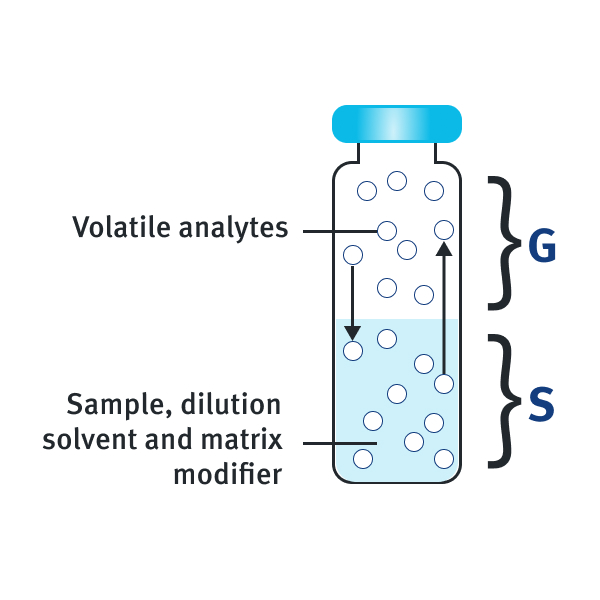costs from $250
products
Basic principles of headspace analysis
A headspace sample is usually prepared in a vial containing the sample, the dilution solvent, a matrix modifier and the headspace. Volatile components from complex sample mixtures can be extracted from non-volatile sample components and isolated in the headspace or gas portion of a sample vial. A sample of the gas in the headspace is injected into a GC system for separation of all of the volatile components.
Phases of the Headspace Vial

G = the gas phase (headspace)
The gas phase is commonly referred to as the headspace and lies above the condensed sample phase.
S = the sample phase
The sample phase contains the compound(s) of interest. It is usually in the form of a liquid or solid in combination with a dilution solvent or a matrix modifier.
After introducing the sample phase into the vial and sealing it, volatile components diffuse into the gas phase until the headspace reaches equilibrium, as shown by the arrows. The sample is then taken from the headspace.
Headspace Vial and Septa Issues
To achieve optimal performance with headspace GC, it is important to carefully prepare the sample and set up the instrument. The vial and cap are crucial elements in headspace analysis preparation. It is essential to use the correct vial and cap.
- Vial Size: Headspace vials come in 6, 10, and 20 ml sizes. Use a vial that is large enough to provide sufficient headspace or phase ratio without excessively diluting the components of interest. The phase ratio should be at least 50% of the sample volume, as discussed later.
- Bottom Profile: headscape vials can be either round-bottomed or flat-bottomed. Both types are suitable, but round-bottomed vials tend to be stronger and may work more reliably when the autosampler moves the vials into and out of the incubator. Round-bottomed vials are better suited for elevated temperatures and applications such as derivatization, as they tend to withstand higher pressures.
- Correct Crimping: When crimping headspace vials, ensure that the crimper is not worn and is adjusted correctly to prevent the cap from turning after application to the vial.
- Septa Choice: Use septa that are suitable for the temperature of the system. Poor septa can result in bleeding and contaminate the headspace.
- Cleanliness of Vial: Vials should be clean to avoid ghost peaks or erroneous results. It is important to note that not all vials are the same.